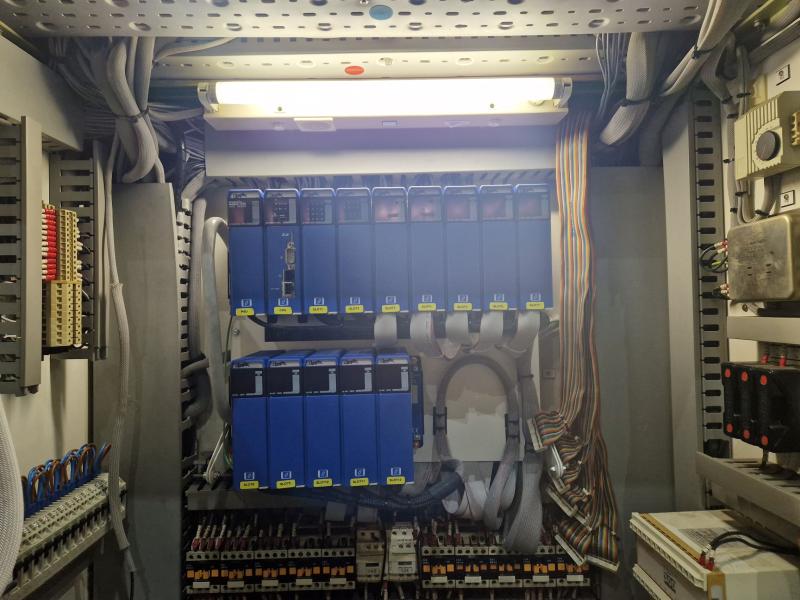Hyper-consumerism is growing, with customers expecting more products, faster. If a customer’s desired product is out of stock, or has a longer delivery time, chances are they will look elsewhere. Supply chains must become fully connected and digitalised, producing a transparent, synchronous system. Inventory management software helps to track stock from source, from the factory to the customer.
Doing more with data
Back in 1973, the grocery industry introduced the universal product code, which meant every product could be identified using the same barcode scanner. Since then, computers have provided ways of storing large amounts of data from barcode scanning for faster and more accurate inventory management.
With today’s cloud software and advanced connectivity capabilities, inventory management is at a place at which it can carry out automated processes with a higher degree of accuracy. This involves automating every aspect of the process, from monitoring stock levels, to generating work orders and billing for materials.
Get proactive
Stock-outs are an event that all inventory managers dread and can come with significant cost to the company, with customer satisfaction and retention at risk. Some inventory managers may choose to resolve stock-outs by increasing stock levels, but that is likely to create a dangerous amount of excess stock that requires additional space and the chance of unneeded product. Instead, it is more space, time and cost effective to proactively plan restocking schedules and be aware of a stock-out before it even has chance to occur.
The traditional inventory management model is a reactive system, where supply increases or decreases in response to fluctuating demand. However, this leaves suppliers one step behind customers, creating inevitable inefficiencies.
With a 2019 LinkedIn report finding blockchain to be one of the fastest growing skills in the APAC workforce, blockchain technology could help manufacturers stay ahead of the game. All product transactions are stored in cryptographic ‘blocks’, which are visible to all groups within the network.
The live data management allows all parties to see stock at the consumer level, with precise tracking of product movement. This allows proactive planning for restocking, rather than delayed reactions to stock-outs. The online system can even be programmed to automatically trigger restocking once a product number has gone below a certain threshold.
Furthermore, while not having enough of a product can be detrimental to a business, supplying false or counterfeit goods can be equally damaging. As blockchain’s recorded data cannot be changed without the approval of every party involved, and every transaction and alternation on a blockchain is traceable, the technology can also help reduce the risk of fraudulent activities or products.
To facilitate rapid response to demand, manufacturing equipment must be working at full capacity. Maintaining a relationship with an industrial parts supplier is essential in ensuring that equipment is ready for changes in production. EU Automation supplies new, reconditioned and obsolete industrial parts, ensuring all industrial equipment can run at optimum levels.
The real-time data stored in blockchain can then be used in forecasting models to truly future-proof stock control. Analysis of the data can reveal patterns in demand previously missed, which can be used to increase accuracy of future stock control.
Mutual benefits
Bringing products to market inevitably relies on a good relationship between supplier and retailer. The pairing arises through a shared objective – selling products to customers. With a mutual goal in mind, supreme transparency between supplier and retailer benefits the supply chain.
Vendor managed inventory (VMI) involves suppliers monitoring retailers’ inventory, allowing stock to be rapidly delivered in response to demand – putting restocking completely in the hands of the supplier. The instantaneous stock information that suppliers can hold allows better production planning, with rates that meet current demand, not that of last month or year when the retailer reported a restock alert.
Rather than the long communication chain between retailer and supplier causing delays, direct stock management in the warehouse allows stock-outs to be solved before they arise. The supplier benefits from better knowledge of product demand, allowing them to maximise profit during periods of high demand and decrease the amount of safety stock needed. With inventory management delegated to the supplier, the retailer can focus more efforts into sales, while also suffering fewer stock outs.
Increased consumer demands and fluctuating trends can make stock management difficult. However, digitalisation allows retailers and suppliers to accurately track products in real-time, forecasting future demand in a mutualistic relationship. Effective tracking relieves pressure, allowing retailers and suppliers to take advantage of the high demands hyper-consumerism brings.






